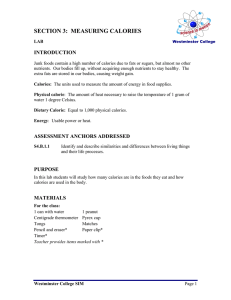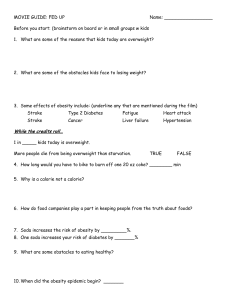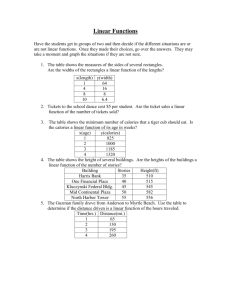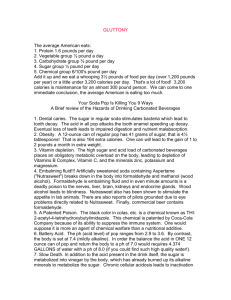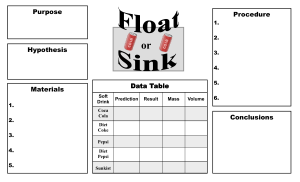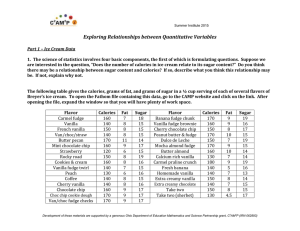advertisement
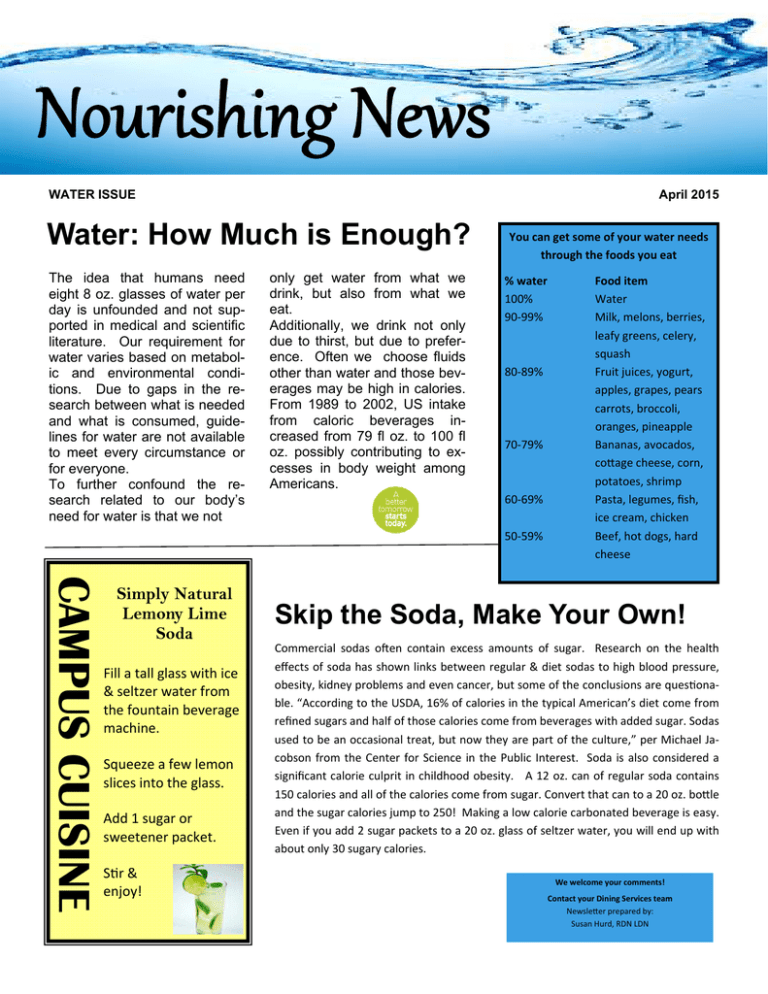
WATER ISSUE April 2015 Water: How Much is Enough? The idea that humans need eight 8 oz. glasses of water per day is unfounded and not supported in medical and scientific literature. Our requirement for water varies based on metabolic and environmental conditions. Due to gaps in the research between what is needed and what is consumed, guidelines for water are not available to meet every circumstance or for everyone. To further confound the research related to our body’s need for water is that we not CAMPUS CUISINE Simply Natural Lemony Lime Soda Fill a tall glass with ice & seltzer water from the fountain beverage machine. Squeeze a few lemon slices into the glass. Add 1 sugar or sweetener packet. S r & enjoy! only get water from what we drink, but also from what we eat. Additionally, we drink not only due to thirst, but due to preference. Often we choose fluids other than water and those beverages may be high in calories. From 1989 to 2002, US intake from caloric beverages increased from 79 fl oz. to 100 fl oz. possibly contributing to excesses in body weight among Americans. You can get some of your water needs through the foods you eat % water Food item 100% Water 90‐99% Milk, melons, berries, leafy greens, celery, squash 80‐89% Fruit juices, yogurt, apples, grapes, pears carrots, broccoli, oranges, pineapple 70‐79% Bananas, avocados, co age cheese, corn, potatoes, shrimp 60‐69% Pasta, legumes, fish, ice cream, chicken 50‐59% Beef, hot dogs, hard cheese Skip the Soda, Make Your Own! Commercial sodas o en contain excess amounts of sugar. Research on the health effects of soda has shown links between regular & diet sodas to high blood pressure, obesity, kidney problems and even cancer, but some of the conclusions are ques ona‐ ble. “According to the USDA, 16% of calories in the typical American’s diet come from refined sugars and half of those calories come from beverages with added sugar. Sodas used to be an occasional treat, but now they are part of the culture,” per Michael Ja‐ cobson from the Center for Science in the Public Interest. Soda is also considered a significant calorie culprit in childhood obesity. A 12 oz. can of regular soda contains 150 calories and all of the calories come from sugar. Convert that can to a 20 oz. bo le and the sugar calories jump to 250! Making a low calorie carbonated beverage is easy. Even if you add 2 sugar packets to a 20 oz. glass of seltzer water, you will end up with about only 30 sugary calories. We welcome your comments! Contact your Dining Services team Newsle er prepared by: Susan Hurd, RDN LDN
